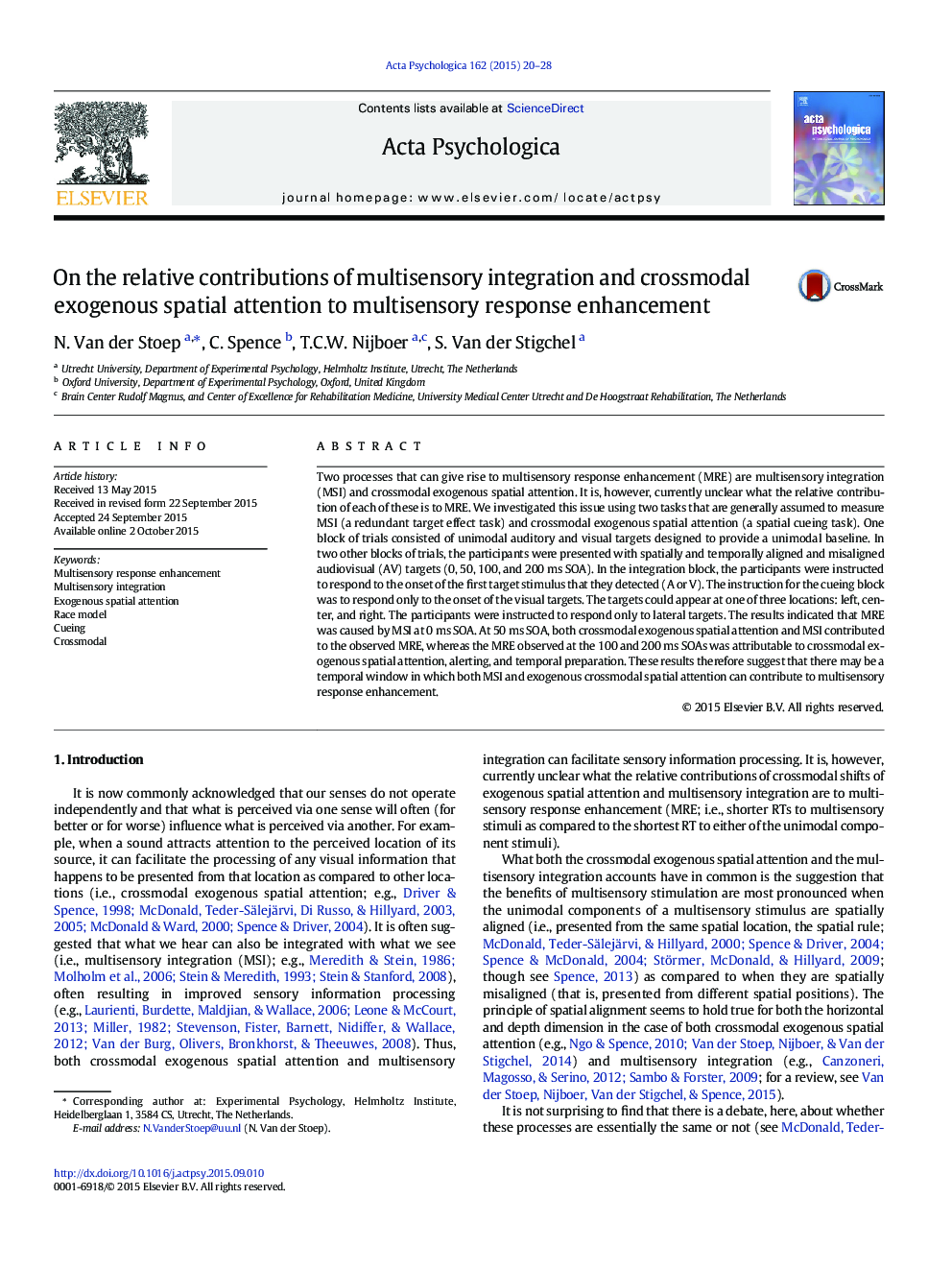| Article ID | Journal | Published Year | Pages | File Type |
|---|---|---|---|---|
| 919642 | Acta Psychologica | 2015 | 9 Pages |
•Responses to multisensory targets are often faster than to unimodal targets.•The role of integration and exogenous attention in this effect was investigated.•At 0 ms SOA response enhancement was explained by multisensory integration.•Both integration and crossmodal spatial attention were involved at 50 ms SOA.•At longer SOAs response enhancement was due to spatial attention, not integration.
Two processes that can give rise to multisensory response enhancement (MRE) are multisensory integration (MSI) and crossmodal exogenous spatial attention. It is, however, currently unclear what the relative contribution of each of these is to MRE. We investigated this issue using two tasks that are generally assumed to measure MSI (a redundant target effect task) and crossmodal exogenous spatial attention (a spatial cueing task). One block of trials consisted of unimodal auditory and visual targets designed to provide a unimodal baseline. In two other blocks of trials, the participants were presented with spatially and temporally aligned and misaligned audiovisual (AV) targets (0, 50, 100, and 200 ms SOA). In the integration block, the participants were instructed to respond to the onset of the first target stimulus that they detected (A or V). The instruction for the cueing block was to respond only to the onset of the visual targets. The targets could appear at one of three locations: left, center, and right. The participants were instructed to respond only to lateral targets. The results indicated that MRE was caused by MSI at 0 ms SOA. At 50 ms SOA, both crossmodal exogenous spatial attention and MSI contributed to the observed MRE, whereas the MRE observed at the 100 and 200 ms SOAs was attributable to crossmodal exogenous spatial attention, alerting, and temporal preparation. These results therefore suggest that there may be a temporal window in which both MSI and exogenous crossmodal spatial attention can contribute to multisensory response enhancement.
